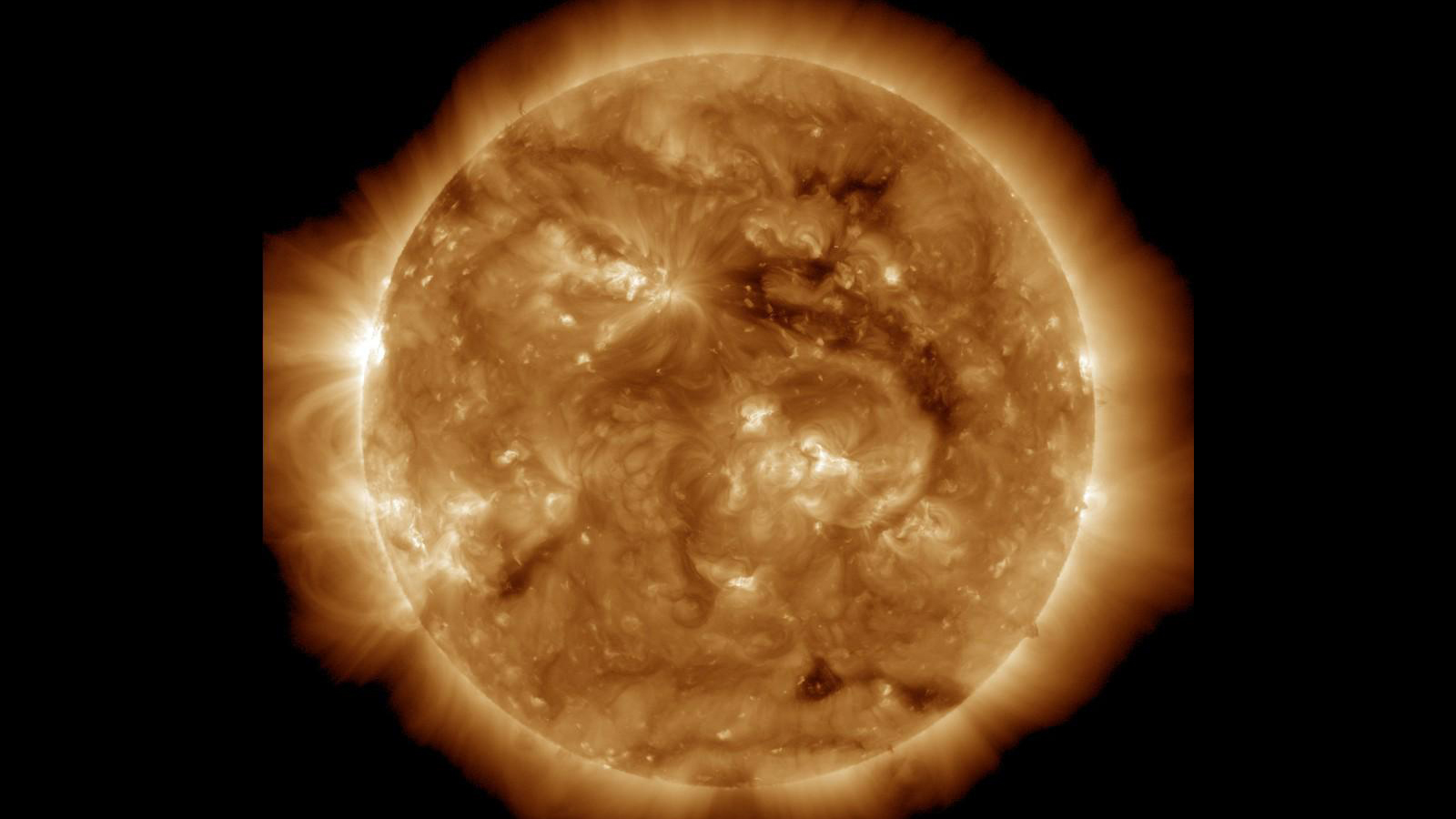Strange new type of solar wave defies physics
The findings hints at undiscovered solar physics.

Scientists have detected a strange new type of high-frequency wave on the sun's surface, and the waves are moving three times faster than scientists thought was possible.
The acoustic waves, called high-frequency retrograde (HFR) vorticity waves, were spotted rippling backward through the sun's plasma in the opposite direction of its rotation. The previously unknown type of wave was described in a study published March 24 in the journal Nature Astronomy.
Scientists can't see into the sun's fiery depths, so they often measure the acoustic waves that move across its surface and bounce back toward its core to infer what's going on inside. But the unprecedented speed of the HFR waves, spotted in 25 years of data from space and ground-based telescopes, has hinted that scientists might be missing something big.
Related: 'Humanity has touched the sun' in a pioneering achievement for space exploration
"The very existence of HFR modes and their origin is a true mystery and may allude to exciting physics at play," co-author Shravan Hanasoge, an astrophysicist at New York University Abu Dhabi's Center for Space Science, said in a statement. "It has the potential to shed insight on the otherwise unobservable interior of the sun."
Scientists initially thought that acoustic solar waves form near the sun's surface thanks to the Coriolis effect, in which points on a rotating sphere's equator seem to move faster than points on its poles.
Once the waves form, scientists think one of three possible processes could accelerate them into HFR waves: either the sun's magnetic field or its gravity could be boosting the Coriolis waves, or superhot convection currents moving under and across its surface could be dragging them to unprecedentedly high speeds. But none of these possible processes fit the data.
Get the Space.com Newsletter
Breaking space news, the latest updates on rocket launches, skywatching events and more!
"If the HFR waves could be attributed to any of these three processes, then the finding would have answered some open questions we still have about the sun," first author Chris Hanson, a solar physicist at New York University Abu Dhabi's Center for Space Science, said in the statement.
"However, these new waves don't appear to be a result of these processes, and that's exciting because it leads to a whole new set of questions."
Filling in the gaps in their knowledge might help the researchers better understand the sun's interior, as well as get a better sense of how the sun affects Earth and other planets in the solar system. It could also give insight into a similar type of high-frequency wave, called a Rossby wave, which has been seen traversing Earth's oceans four times faster than current models can explain.
Originally published on Live Science.
Join our Space Forums to keep talking space on the latest missions, night sky and more! And if you have a news tip, correction or comment, let us know at: community@space.com.

Ben Turner is a U.K. based staff writer at Live Science. He covers physics and astronomy, among other topics like weird animals and climate change. He graduated from University College London with a degree in particle physics before training as a journalist. When he's not writing, Ben enjoys reading literature, playing the guitar and embarrassing himself with chess.










